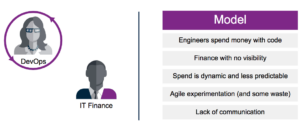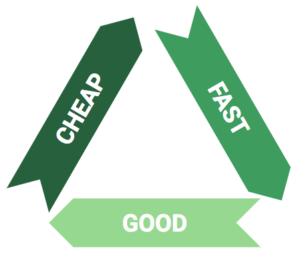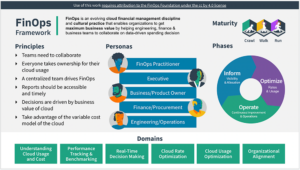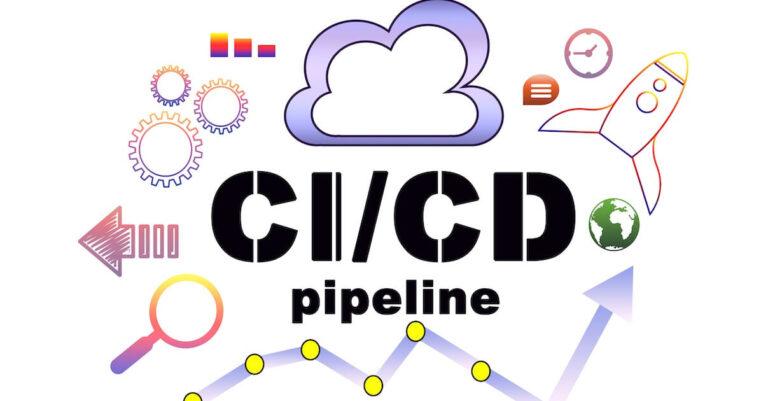More than ever, today’s companies in every industry deliver value to their customers with technology. DevOps has allowed companies to accelerate technology delivery to meet customer demand using the cloud. But this shift has put purchasing power in the hands of developers in ways that have broken traditional procurement. Engineers now spend company money at will, every minute of the day. Do they consider price? Yes. They do but not as much as they are concerned about innovation and cutting-edge technology. This change has led to resource allocation challenges in the cloud and its management. Reviewing costs on a quarterly or even monthly cadence often results in sticker shock when unexpected, or forgotten resource usage adds up to material levels in the bill. Cloud spending is becoming a material part of organizational budgets, impacting the bottom and top lines of enterprise profit & loss (P&L).
Why Are Cloud Costs Variable And Difficult To Estimate?

Image source: The Linux Foundation
Cloud with DevOps has changed the dynamic of buying IT resources. Have a look at the processes and their impact on increasing cloud bills:
- Engineers now have the power to spend company money with code.
- Finance has less visibility to spend until far after the fact and with little detail or understanding. And often, they may not be able to do their fiduciary duties.
- Spending is dynamic; it changes daily.
- There is experimentation:
- This can be good for the business and for the application, but it also introduces some waste.
- Is it being managed?
Overall, there’s a lack of communication that hampers the company as a whole and keeps relationships tense. And with all that growth, the time-honored silos between tech, finance, and procurement have become a problem. It represents the clear need for a new operating model to address cloud resource allocation and the new realities companies face. They need new operating facilities that infuse collaborative decision-making in the era of DevOps and Cloud to maximize the value of the company’s cloud investment.
How FinOps Helps Addressing Cloud Challenges?
FinOps stands to solve the financial and accountability challenges of the cloud. It presents the most efficient way for teams to manage their cloud costs, where everyone takes ownership of their cloud usage supported by a central best-practices group. Cross-functional teams work together to enable faster delivery while, at the same time, gaining more financial and operational control. FinOps ensures you get the most value out of every dollar you spend in the cloud. It is the practice of bringing financial accountability to the variable spending model of the cloud. Cloud financial management or FinOps focuses on primary criteria such as:
- Combines distributed development, finance, and business teams.
- Focuses on Informing, Optimizing, and Operating.
FinOps as a Combined Team of Development, Finance, and Business Teams
FinOps involves its members ( engineers, finance, and business/executives) to move beyond their comfort zone and learn something about each other’s disciplines. Let’s understand what this means to each stakeholder of FinOps:
Finance Learns About How Cloud Operates
Instead of looking at spending on a monthly or quarterly basis in a traditional model, the finance team, as part of FinOps, works closely with the technology team to understand how cloud resources are used, what resources they might need, and when they need them. Instead of monthly or quarterly calculations, the process shifts to hours or even seconds. With this knowledge, they can decide and look for far better cost optimization solutions, such as buying Reserved Instances or renegotiating terms with a cloud provider.
Development Learns To Consider Cost Significance
As part of FinOps, developers must understand how their technological choices can impact a company’s accounts and consider cost as a new efficiency metric. Engineers in operations or development must understand how their code writing and infrastructure choices can affect a company’s finance budget.
Executives or Business Teams Set The Priorities
As part of FinOps, business or executive leadership needs to understand the project requirements and define their priorities so that other FinOps team members can make trade-offs and achieve a perfect balance between cost, speed, and quality. They use Iron Triangle as their tool to figure out the best choices available to them to support their business decisions.

Image source: The Linux Foundation
Referring to Iron Triangle helps FinOps leadership seek guidance and plan actions to maximize the value of cloud spending. They must make tradeoffs that focus on the company’s goals in every case regarding how fast, how good, and how cheap to support development requirements. To make an informed decision, they also need to understand the choices available to finance and engineering teams to perform their job more efficiently.

Image source: FinOps Foundation
Focuses on Informing, Optimizing, and Operating
Typically the FinOps practice is iterative, and the maturity of any given process, functional activity, capability, or domain will improve with repetition. Hence, the FinOps practice focuses on the maturity model; crawl, walk, and run. Based on a company’s FinOps maturity model, its cloud finance management is segregated into three phases to help the company optimize its cloud footprint. Let’s dive into the three phases of FinOps:
- Inform: The Inform phase gives you the visibility for allocation and for creating shared accountability by showing teams what they’re spending and why. This phase enables individuals who can now see the impact of their actions on the bill.
- Optimize: The Optimize phase empowers your teams to identify and measure efficiency optimizations, like rightsizing, storage access frequency, or improving reserved instance coverage. Goals are set upon the optimizations identified, which align with each team’s area of focus.
- Operate: The Operate phase defines processes that enable the goals of technology, finance, and business to be achieved. Automation can be deployed to enable these processes to be performed in a reliable and repeatable manner.
How Does Cloud Financial Management or FinOps Benefit Businesses?
Today’s company leaders are all aware of how important the cloud is to their success. When teams want to scale apps rapidly, be flexible with features and capabilities, and foster innovation that leads to new successes, they must have flexible access to cloud resources. The three-phased approach (Inform, Optimize, and Operate) to cloud financial management can assist these firms in positioning themselves for long-term success. Based on that, companies can ensure five crucial advantages from their FinOps efforts. Let’s explore what they are:
Maximize Cloud Usage
Depending on their individual and group needs, various stakeholders from across the organization may deploy cloud resources. However, employing a reliable cloud financial management solution guarantees that every cloud investment is utilized to its fullest potential.
The total cost of ownership steadily rises over time, and without clear insights into what drives cloud spending, but strategic cost reduction is impossible. Watch the video on Cloud Cost Optimization – best practices and challenges and understand how to get the maximum benefits at the lowest price point.
Avoid Wasting Cloud Spend
Wasteful cloud expenditure is typical in the cloud era because companies must be aware of the resources their groups and departments have purchased. Gaining insight and minimizing resource wastage are significant benefits of cloud financial management.
Enable Forecasting and Automation
Cloud financial management or FinOps also includes tools that enable automated cost optimization opportunity discovery and use forecasting based on knowledge from business product managers. As a result, businesses may devote more time to innovation.
Lowering Security and Compliance Risks
In particular, from a compliance and security standpoint, cloud financial management is essential for recognizing and mitigating risks. Developing policies that systemically lower these risks can be aided by working with specialized consultants.
Drive cloud maturity
Investing in cloud financial management, in and of itself, is a sign of a high degree of cloud maturity. Further, cloud financial management solutions help unlock the ROI in long-term cloud investments, making the journey to the cloud more exciting for all stakeholders involved.
Final Thoughts
Implementing FinOps within an organization is ideal for building and maturing cloud usage practices, achieving and maintaining significant savings on cloud expenditure. Professional FinOps consulting helps you leverage the expertise, technology, and best practice you need to achieve financial accountability, data-driven decision-making, and high-performance culture. Adopting the FinOps framework provides peace of mind and enables you to continuously improve and realize real savings while meeting innovation, speed, and quality demands.




